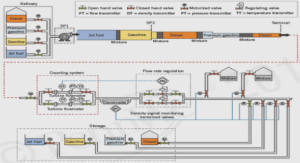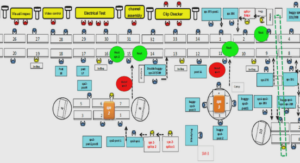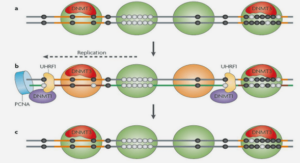The physiology of host-feeding in parasitic wasps
The nature of nutritional resources, and the rules governing the allocation of these nutrients in the organism, are arguably some of the most important and least understood elements in behavioural and evolutionary ecology (Boggs 1992). One of the systems where the connection between the ecological and physiological aspects of nutrition has been most explicitly made is in parasitoid wasps (Rivero & Casas 1999a). Parasitoids are excellent models for testing theories concerning the evolution of behaviour and life-history strategies (Charnov & Skinner 1984; Godfray 1994; Charnov & Skinner 1985; Quicke 1997) and for integrating such knowledge into multitrophic population ecology (Hassell 2000; Hochberg & Ives 2000). Females search the environment for hosts (usually other insects) in which to lay their eggs. In addition, in many species females must also feed from the host in order to obtain the nutrients necessary for egg production. Often, however, host-feeding is either incompatible with laying an egg or can reduce the quality of the host for the developing larvae (Jervis & Kidd 1986; Heimpel & Collier 1996). Host-feeding females are thus faced with a decision that epitomises the evolutionary trade-off between current and future reproduction: whether to use the host for egg-laying or for feeding. Host-feeding in parasitoids has been the target of many theoretical studies that have aimed to predict the optimal physiological and environmental conditions under which a female should bypass an opportunity for current reproduction in order to feed from the host and increase her future reproductive opportunities (Jervis & Kidd 1986; Mangel 1989; Chan 1991; Kidd & Jervis 1991a; Houston et al. 1992; Chan & Godfray 1993; Collier et al. 1994; Collier 1995a; Heimpel et al. 1998). The predictions of these models, however, rely heavily on the nature and function of host-feeding. In particular, a key assumption of the models is whether host-feeding provides nutrients exclusively for egg production (Jervis & Kidd 1986; Chan & Godfray 1993; Collier et al. 1994; Heimpel et al. 1994), exclusively for maintenance (Houston et al. 1992; Chan & Godfray 1993), or both (Chan & Godfray 1993; Collier 1995a; Heimpel et al. 1998), with different assumptions rendering drastically different results in terms of behavioural decisions. The nature and allocation of nutrients also have implications for population stability and persistence (Briggs et al. 1995; Kidd & Jervis 1989; Kidd & Jervis 1991b). A drain of nutrients from the same pool of resources that produces eggs, for use in maintenance, is destabilising. On the other hand, a non host-food source, complementary to host-feeding, has stabilising effects (Briggs et al. 1995). By contrast, in Nutrients acquisition and allocation in parasitoids 14 Kidd & Jervis’ model (1989) host mortality inflicted by female parasitoid wasps through feeding overrides stabilizing (and persistence-promoting) processes. Thus, results of population dynamics models show that the rules of nutrient acquisition and allocation have important consequences for the dynamics of such interactions. The experiments carried out so far have largely consisted of comparisons of egg production and longevity in host fed and unfed females (reviewed by Jervis & Kidd 1986 and Heimpel & Collier 1996). While the positive correlation between host-feeding and fecundity appears to be ubiquitous, these studies have, however, rendered ambiguous results about the effect of host-feeding on parasitoid longevity. In some species host-feeding has no effect on longevity, in some it does, while yet in others it does only if a sugar source is also available (reviewed by Jervis & Kidd 1986 and Heimpel & Collier 1996). While this disparity may partly be due to intractable differences in the experimental conditions (Heimpel & Collier 1996; Rivero & Casas 1999a), it is much more likely to reflect interspecific differences in the nature of the nutrients consumed. Most studies assume that host-feeding parasitoids consume the host’s haemolymph (Leius 1961; Jervis & Kidd 1986; Jervis et al. 1992; Rosenheim & Rosen 1992; Briggs et al. 1995; Collier 1995a; Heimpel & Collier 1996). This assumption, which is based on the highly proteinaceous nature of this substance (Chapman 1998) has, to our knowledge, never been tested experimentally. In fact, a wide range of feeding behaviours (from parasitoids which puncture the host and imbibe the fluids to those that consume the entire host), and host stages consumed (from eggs to pupae), are grouped under the common banner of « host-feeding » (reviewed by Jervis & Kidd 1986 and Heimpel & Collier 1996). Host-feeding may thus involve the ingestion of a wide spectrum of nutrients, which include not only proteins but also fat body lipids, sugars and trace elements. Studying the nature and function of these nutrients at a physiological level is essential in order to understand the adaptive nature of host-feeding decisions in parasitoids. In this study, we carried out a detailed physiological investigation of host-feeding in Eupelmus vuilletti (Hymenoptera, Eupelmidae) a parasitoid that feeds and oviposits in third to fourth-instar coleopteran larvae. We aimed to: (1) determine the biochemical nature of the host-feeding fluids, (2) ana lyse and quantify their composition and (3) test directly the effect of these nutrients on female longevity. For this purpose we interrupted females while they fed and analysed biochemically the fluids extracted. The composition of the host-feeding fluid was then compared with haemolymph samples. We then separated, identified and quantified the main sugars in the host haemolymph using TLC coupled with colorimetric techniques. We 15 Chapitre 1 focus our attention on sugars because they are known to be critical in determining longevity in parasitoids and other insects (Jervis & Kidd 1986; Heimpel & Collier 1996; Chapman 1998). We then proceeded to test directly the role of these sugars in female longevity through a series of microinjections that allow us to precisely dose the sugars at the appropriate concentrations. Quantity of haemolymph consumed during host-feeding was also measured. Our approach allows us to test directly and unambiguously the physiological impact of host-feeding on life history traits in parasitoids.
Extraction of host-feeding fluids
In this species, females feed from the host by puncturing its cuticle and creating a feeding tube with secretions from their ovipositor (Fulton 1933). The females then turn and use the feeding tube to extract the host fluids with their mouthparts. In this species, females host-feed an average of 18 times during their lives (personal observation). In this experiment, newly emerged females were deprived of hosts for 48 hours and were then placed individually in a small Petri dish (diameter 5.5 cm) with 3 hosts (fourth-instar C. maculatus larvae). Hosts had been previously extracted from the V. unguiculata seeds and placed inside a gelatin capsule following Gauthier & Monge (1999). This system allowed the observation of feeding behaviour and the extraction of the host-feeding fluids from the host-feeding tube. Once a feeding tube was constructed, the female was removed and a graduated micro-capillary connected to a manual pump was introduced inside the feeding tube. The liquid collected was immediately pumped out into a 1.5 ml Eppendorf tube placed on ice. In order to obtain a sufficient quantity of fluid for biochemical analyses, extracts from several host-feeding events were pooled (about 10 host-feeding events per sample, 6 samples for lipid/sugar/glycogen analysis and 5 samples for protein).
Extraction of haemolymph
In order to compare the contents of the host-feeding fluids to those of haemolymph we extracted haemolymph directly from the host. Extractions of haemolymph were carried out using the same pumping system as above. For this purpose c.a. 0.7 µl of haemolymph was extracted from each host by inserting the micro-capillary in the mid-lateral side of their body. Haemolymph samples were analysed individually for each larva (33 samples for lipid/sugar/glycogen analysis and 32 samples for protein).
Whole host body extracts
60 hosts previously extracted from the V. unguiculata seeds were weighed (Supermicro Sartorius, Göttingen, Germany), and immediately placed individually into a 1.5 ml Eppendorf tube placed in ice where they were crushed with a micro-pestle. Whole body extracts were analysed individually for each larva (30 samples for lipid/sugar/glycogen analysis and 30 samples for protein). Results were expressed as µg/mg. For the ease of presentation and to be able compare these values directly with the values for the two other fluids (host-feeding fluids and host haemolymph compositions are expressed as µg/µl), we carried out a transformation assuming the density of whole body extract to be 1 mg/µl. This value is within the range of values for the insect body (0.915 mg/µl for lipids and 1.900 mg/µl for exoskeleton; Denny 1993).
Lipid, sugar and glycogen analyses
Quantification of the amount of lipids, sugars and glycogen in the host-feeding fluid (n=6), haemolymph (n=33) and whole host body extract (n=30) samples were carried out using a modification of the colorimetric techniques developed for mosquito analysis (Van Handel 1985a, 1985b; Van Handel & Day 1988). For this purpose, 40 µl of 2% sodium sulphate and 300 µl of chloroform-methanol (1:2) were added to each sample. After centrifugation at 180-200 g, the lipids and sugars remain dissolved in the supernatant, while the precipitate contains most of the glycogen. For the lipid analysis, 150 µl of the superna tant was transferred into a borosilicate tube 17 Chapitre 1 (16×100 mm) and then placed in an ethylene-glycol heating block at 90°C to completely evaporate the solvent. 40 µl of 95% sulphuric acid were then added, and the tube re-heated at 95°C for 2 minutes. After cooling, 960 µl of vanillin reagent was added to the tube which was then left for 15 min (see Van Handel 1985b for details). Each sample was then transferred to a micro-cuvette and read in a spectrophotometer at 525 nm (DUâ -64 spectrophotometer, Beckman, Villepinte, France). For the sugar analysis, 150 µl of the supernatant was transferred into a borosilicate tube (as above) which was then placed in an ethylene-glycol heating block at 90°C to evaporate the solvent down to a few microlitres. After adding 1 ml anthrone reagent, the tubes were placed at 90°C for 15 min, then cooled and read in a spectrophotometer at 625 nm (see Van Handel 1985a). The glycogen, adsorbed in the precipitated sodium sulphate, was washed with 400 µl of 80% methanol. Samples were then vortexed and centrifuged for 5 min at 180-200 g. Once the supernatant was eliminated, 1ml of anthrone reagent was added and the tubes were placed at 90°C for 15 min. After cooling, the samples were first filtered (Milliporeâ , diameter=0.45 µm), and placed in micro-cuvette and read in the spectrophotometer at 625 nm. The calibration curves that allowed us to transform absorbances into concentrations were made with standard vegetable oil (for lipids) and glucose (for sugars and glycogen) following Van Handel (1985a and 1985b).





